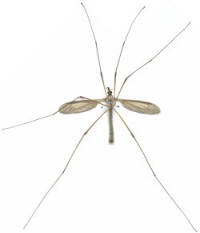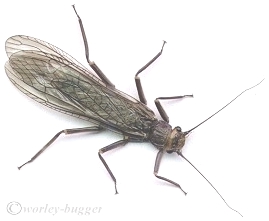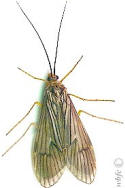
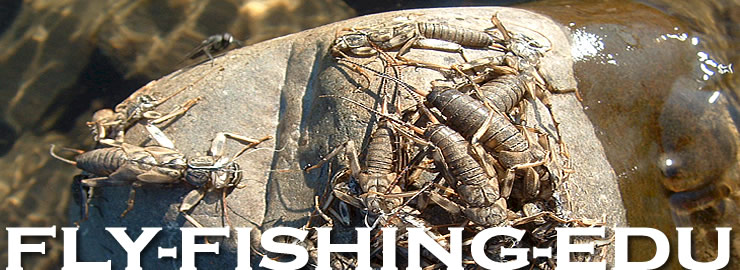
|
|
||||||||
|
Over the past several decades, fly fishing has become a popular form of fishing, espeically in the Western United States. With the vast amount of fabled rivers, streams and stillwater fisheries spread out across the Pacific Northwest, both men and women have taken up the sport of fly fishing. Each year, the interest and intrique in catching both freshwater and saltwater species of fish on flies continues to grow. With that said, the professional staff at Worley Bugger Fly Co, has been educating fly anglers for over two decades on the art of catching fish with flies. | ||||||||
| ||||||||
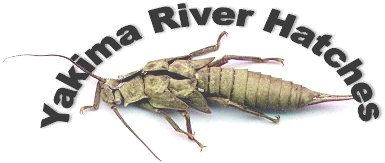 | ||||||||
| "YAKIMA RIVER HATCHES INDEX BY MONTH" | ||||||||
|
JANUARY |
||||||||
|
Its the start of a new year and a new fly fishing season in the Yakima River Valley. If Mother Natures is kind, it is a guarantee that for some time now, the river banks and low lying hillsides in Kittitas County have been blanketed in several inches of insulating snow pack. It is a virtual winter wonderland in and the residents of Ellensburg and the surrounding rural communities, are enjoying several outdoor recreational activities, one of which is fly fishing on the Yakima River. Crazy you say, we just may be, but for the local residents living in the Central Basin of Washington State, opportunities abound for the adventurous angler any time of the year. This is the coldest month of the season just about everywhere in the Western hemisphere. Conditions throughout the Yakima River Valley during the month of January will remain fairly consistent. Cold areas, blanketed by thick fog banks are typical this time of year. To the east, the mighty Columbia River is less then thirty miles distance. During this period of the month, moisture rising from this large body of water, will create dense areas of fog, that will settle in between the low lying hills of the Ellensburg Valley.
The Skwalla Stonefly Migration will intensify this month as well as thousands of stonefly nymphs creep along the bottom of the Yakima. These early spring stoneflies are making their yearly exodus in preparation for the February adult emergence. The trout as well as many of the other fish species of the Yakima are feeding veraciously on these plentiful stonefly nymphs. During this time you may be amazed at the places you find these feeding fish. River conditions will vary this month and are strictly dictated by weather conditions. If the winter climate operates within normal perimeters, water conditions will remain consistent. If temperatures drop well below the freezing level, slush ice will form in the river creating harsh icy fishing conditions. For those that have discovered Yakima River winter fishing and prefer the benefit of an un deserted, quiet river this time of year, visit our river journal page for the latest in Yakima River fishing conditions. You are also welcome to visit the pro shop in Ellensburg or give the Worley Bugger crew a call for the latest fishing report. |
||||||||
|
FEBRUARY |
||||||||
|
February has arrived and the landscape in the Yakima River Valley is beginning to look much different now. The cold, foggy days of January are shades of the past and a much warmer climate is on the horizon. The low lying snow, especially accumulations that have collected in the Rodeo City over the winter are quickly dissolving under the warm afternoon sunshine. Even the low lying snow around the hillsides of the river is beginning to disappear. The snow capped peaks of the Cascade Mountain Range tower over the Kittitas Valley, creating a spectacular picturesque back drop. The water reserves for the upcoming year have frozen high atop these massive, rugged peaks. A standing monument to Mother Nature and millions of years of evolution. This month, the average daily temperature will skyrocket almost fifteen degrees from what we experienced in January. Fifteen degrees may not seem like much, but for this time of year it is mammoth. The majority of the month's fishing will still consistent of subsurface fishing techniques. An emergence of Midges will still occur and at times during the month, clusters or balls of these tiny insects will form. This can be fun, exciting dry fly fishing as trout slurp orgies of these insects off the waters surface. Due to lower water flows, a combination of trout species, Rocky Mountain Whitefish and Mountain Suckers will all congregate in the pools of the Yakima throughout the month. Whitefish are usually found in the tops of the runs and riffles, where the faster moving water flows over medium to large size boulders. Trout generally take up a holding position in the slow portions of a river. Learning to read water for specific times of the year is key to any fishermen's successes.
Do not neglect the shallow edges of the river. Trout key in very quickly to the presence of this new found food source and wait along the edges of the shallows to feed on these vulnerable insects trying to escape to the banks of the river. Blue Wing Olive Mayflies will also become an intricate portion of the trout's diet during the last days of this month. The clinging nymphs will be an important part of your fishing strategies with the adult duns and emegers taking precedence during the early hours of the afternoon. The Yakima's spring Baetis are generally a size #16, however at times the river can produce a larger size mayfly. Make sure you cover your bases with sizes #14 to an #18 for spring fishing. Cripple and emerger patterns should decorate the compartments of your fly box as well. These patterns should be an intricate part of your spring fishing arsenal. MARCH Spring fly fishing is officially ushered in during the month of March in the Yakima River Valley. If you aren't fishing this fabulous Central Washington trout stream during the month of March, you could possibly be missing some of the best fishing of the spring. Water flows characteristically remain low and the trout maintain their winter holding lies. However, water temperatures are on the rise and so are the trout's feeding metabolism. During the first week of March, the Skwalla Stonefly adults will begin forming in larger numbers along the river banks of the river. The Yakima rainbows are attentive and eagerly anticipate their opportunity to gorge themselves on this large size spring morsel. Because this stonefly is an pre-spring/post winter insect, it's movements are very limited while it remains suspended on the water. The majority of the day a dead drift of your Skwalla pattern is essential. Small twitches may invoke a strike, but for the most part a drag free drift will be required of you. Concentrate your Skwalla imitations around the grassy banks and slower pools of the river. Don't hesitate to work the shallow edges as well. Trout have been consuming nymphs now for several months and are aware of their presence. They quickly mount their attack as the formation of the adults begins. Holding in low water, where camouflage and cover from the river is available is standard practice for an opportunistic rainbow. Many fly fishermen feel the Stimulator or a big bushy pattern heavily hackled is a good choice when selecting a fly to imitate the Skwala Stonefly Adults. In my opinion, this fly really doesn't perform well in lower water spring situations. It's construction is much to bushy to productively duplicate this natural insect in shallow water conditions. Select a pattern that rides flat in the water and projects a natural silhouette. Flies like the Stimulator, that are heavily hackled are great summer time, fast water patterns.
The March Brown Mayfly will also begin its yearly emergence cycle on the Yakima during the month of March, commencing in the latter days of the month. A size 14 March Brown pattern will be effective during the hatch. The nymphs are a healthy part of the trout's diet throughout the month of March and are usually overlooked as an important food item by fly fishermen. Vast numbers of these sub aquatic insects have already been congregating during the early spring months, so fishing a imitation to match the natural will be effective throughout most of the main stem of the Yakima. APRIL The month of April, will generally produces some of the best spring fly fishing you can experience on the Yakima. However, this can be an unstable time during the month. Water and air temperatures are rising and the spring thaw can and will begin sometime during the month of April. The renowned emergence of the spring mayfly, the March Brown Mayflies starts to occur. Water conditions, temperature and specific sections of the river will determine the density of this spectacular mayfly emergence. This mayfly will appear on all areas of the river, however some sections of the Yakima produce a far greater concentration of mayflies on a day to day basis. This is primarily due to cleaner, less silt ridden water conditions. Mayflies, unlike Caddisflies require a cleaner environment to thrive. You will find these productive waters above the "Yakima River Canyon"
A keen eye on your part will have to make the determination. Once you have established and concluded the feeding intent of the Yakima Rainbows, adjusting your pattern selection and present your imitation accordingly. As water and air temperatures steadily begin to rise during the month, Caddis will make their initial appearance over the waters of this Central Washington river. Conceivably several varieties and sizes of Caddis may begin appearing. Sometime during the month, large Sedge Caddis and small Grannom Caddis will make their presence known. Fishing and observations and become quite interesting as several species of aquatic insects have now become available to foraging fish. Your skills as a fly fishermen will be called upon to make this selective determination. MAY During the month of May, an avid Yakima River fly fishermen can expect to see the arrival of several new and exciting aquatic insect emergences. Along with this addition of new aquatics, you will also encounter the previous months insects as well. The river will continue to produce the afternoon mayfly emergences of March Browns and Blue Wing Olives. River flows and conditions depend entirely on the winters snow pack accumulations. On an average, the river would be operating at levels between 2000 cfs (cubic feet per second) and 2800 cfs. If this is the case, the lower portions of the Yakima will be difficult for bank fishermen. When the river reaches these levels, the Yakima takes on a whole new look. This is a big western river now, so fly fishing the Yakima River from a safe, comfortable drift boat is one best option for a productive day of fishing. In May, the March Brown has become a consistent afternoon hatch, however sections of the river will produce a heavier concentration of this mayfly on a regular basis. Areas above the Yakima Canyon tend to generate a more consistent day to day emergence during the month of May. Most years we will continue to see the March Brown hatch last into the month of June through sections of the Upper Yakima River. The Baetis (B.W.O.) Mayflies will also be a constant distraction to the Yakima rainbows during this time, especially on the cool, cloudy days of the month.
The attentions of trout will soon turn as the female of its species begin their egg laying ritual. Their return to the river is an aggressive, violent act to encounter, but one that plays out over several western rivers during the late spring. The female, once ripe with eggs will flail her body haplessly on the rivers surface, creating commotion and mayhem in hopes of dislodging her dark egg sac. When this occurs, fishing big,dry fly patterns will provoke some of the rivers largest rainbows to the surface. This hatch of these
stoneflies will occur in just about every area of
the Yakima, however concentrations through the upper
and lower farmlands From the head water portions of
the upper river to sections deep into the Lower Yakima
River Canyon,
If this isn't enough insect activity to distract a fly fishermen as well as the trout, the Pale Morning Dun Mayfly will also begin appearing during the afternoons in the month of May. This mayfly usually begins it's emergence sometime during the middle of the month and will show up on the water's surface in the latter portion of the afternoon. A cripple imitation in size 16 is a consistent producer. JUNE As the month of June arrives you can expect to experience high water flows throughout the main stem of the Yakima River. This is the beginning of the summer irrigation season and river volumes are increased to meet water requirements for farmers and ranchers in the Kittitas and Yakima County Valley's. The Yakima will swell from bank to bank and wading fishermen who walk the river with ease throughout the spring months will find the task now near impossible. During this period of high water, insect hatches may become stagnant until the river stabilizes and returns to a consistent flow. Once a stable flow is established, usually in a weeks period of time, expect to see a continuing blizzard of Caddis throughout the Yakima system. Emerger and pupa imitations will be productive during periods of extreme Caddis activity. Adult patterns skated and twitched on the surface in the evening hours becomes a nightly ritual. In June,
Pale Morning Dun
is our predominate summer time mayfly on the
During the month of June, the fly fishermen of the Yakima will begin to see the first signs of a Golden Stonefly hatch. This large Stonefly will "Emerge" throughout the entire "catch & release" system of the Yakima, however a large population of these stones do reside in the lower reaches of the river. The sections of the upper Cle Elum can experience intense hatches of these gold colored stoneflies during the latter part of the month. This golden colored stonefly is a much different creature than it's previous months predecessor, the Salmon Fly, which hatches on the Yakima during the month of May. The
emergent A good indication that the Golden Stoneflies are present. Watch the slow moving pools and foam lines of the river. When stonefly shucks or skeletal remains are present floating in the surface film you will know Golden Stoneflies are a big part of the food chain. In June, the Yakima can produce a random emergence of both Brown and Green Drake species. However, it occurs in only a couple of sections of the river (mostly the upper and farmlands areas of the Yakima) and can be spotty and sporadic.
JULY July is an important month on the Yakima and with it terrestrial fishing is thrust into the spotlight as several varieties of interesting little creatures become food forms for the Yakima River Rainbows. In the month of July you can expect to see much better water conditions, however the river will be high, swollen from bank to bank and running at peak summer flow. While other western rivers are dropping in water volume, the Yakima is just the opposite. This means access to the prime water can be limited to those fishing without drift boats. Vegetation along the banks is also starting to thicken under the warm Kittitas Valley sunshine. Along these river banks where this foliage is thickest, you will find a variety of aquatic and terrestrial life forms nesting during periods of the day.
The Lower Yakima Canyon, south of Ellensburg is not notorious for an encounter of this stonefly, however I have seen fair to somewhat heavy activity at times through portions of the upper canyon. Its good to be prepared for them anywhere this time of year. AUGUST During the month of August you can expect to encounter a variety of circumstances unfolding on the Yakima. Water flows will continue to run at optimum levels to meet the water demands for ranchers, farmers and orchard growers during the peak of the growing season. With these hot days, terrestrial life forms will become an important part of the Yakima rainbows dietary consumption. Thick, lustrous vegetation this time of year grows along the banks of the Yakima. Here aquatic and non aquatic creatures of every kind reside in the thick grasses. During the afternoon, a Kittitas Valley summer breeze can arise. Here, insects of every kind cling to the river bank vegetation and become vulnerable as warm, August winds blow through the thick shards of grass. Throughout the day, these summer time food forms are helplessly blown on to the waters surface. Fishing your favorite terrestrial pattern or attractor pattern along these green, grassy banks will provide plenty of fast and furious dry fly action. August is also a transitional period on the Yakima River. Insect emergences of the early summer like P.M.D. Mayflies, Yellow Sallies, and several varieties of Caddis will all begin to dissipate as the month progresses. Sporadic Caddis hatches will still appear in areas of the river at dusk, however they can be sporadic and never a guarantee from day to day like the previous summer months.
As the month nears the end of its days, water flows
on the river will begin to drop off, decreasing slightly each day. These
demands can fluctuate depending on irrigation needs, weather and the cutting
schedule. SEPTEMBER As the month of September begins, water flows that swelled along the banks of the Yakima will begin dropping as the annual Kittitas Reclamation District irrigation flip flop is initiated. River flows that raged high during the summer will steadily drop during the first week of the month. As this happens several important insect hatches begin on the Yakima. A mass invasion of Short-wing Stoneflies will converge on the banks of the rivers as hordes of male and female stoneflies will take refuge, hiding under rocks, brush and other debris that has collected. Perhaps the most consistent and productive dry
fly fishing of the year begins during the month
of September as the water releases from the main
storage reservoirs are drawn back for the
season. As flows recede, a large but delicate
insect begins buzzing about the river.
The
competition for the
annual right of procreation
begins as male stoneflies gather at a far
greater ratio than their
female counterpart. The
males, much smaller in size than
the female species, attract
the attentions of the large female by
thumping their
abdomens along the ground.
Females respond and the
commencement of the mating ritual
begins. Upon fertilization, the egg laying female will begin her return to the waters of the Yakima to deposit the egg sack. The female short-wing is a monstrosity, measuring in at over 2" inches in length, nearly the size of Pteronarcys (salmon fly) it's earlier hatching cousin that emerges during the month of May on the Yakima. The male of the species is especially energetic and often times will scurry atop the water very quickly. Presenting your fly in the same manner will draw the vicious attacks of the resident rainbows. The female being the larger of the two species creates quite a commotion as well. The thrashing of her body, depositing the fertile egg sack atop the waters surface will inevitable bring her demise. Fishing an imitation to match the characteristics of the natural can provide you with plenty of top water action throughout the month of September.
However, the October Caddis that due emerge throughout the main stem of the Yakima will produce days of remarkable and memorable fishing. Emergence times for the giant Caddis are early mornings and dusk. During the latter parts of Fall you can experience an emergence sporadically throughout the day, which consequently will provide you with great top water action.This is another giant insect that creates spasm like movements on the surface of the water. The wild rainbows of the Yakima hone their instincts to these seizure like actions. Forget what the earlier spring months of fly fishing required of you. No delicate presentation or drag free drift here. Your abilities to duplicate the natural movements of this insect during it's emergence will be tested. The month of September will also mark the return of Fall Baetis to the Yakima. Here, your skills as a proficient fly fishermen can be tested. A presentation of your imitation, riding drag free will at some point in the afternoon be required. A total 360° turn will occur during the day, its just a matter of when it will happen. A Yakima River fly fishermen can experience the thrill of a big Stonefly or Fall Caddis hatch, fishing ungodly hair wing imitation in size 6. Within a matter of moments, changes can occur and you find yourself in the middle of a tiny Mayfly emergence. Here, size 18-20 Blue Wing Olive Mayflies will appear breaking the surface tension. The Yakima Rainbows begin feeding methodically, slurping them from the film around you. A change from heavy to light tippet along with a presentation that duplicate the natural insect is a prerequisite for successful fishing. Are you up for the challenge? September, October and the month of November is a wonderful time to experience Central Washington's, Yakima River. Changes begin occurring on a daily basis as the scenery along the river becomes a vibrant, eye catching spectacle of Mother Nature. The cottonwood trees and foliage that grew dense during the summer provide an intense back drop of unbelievable beauty. Pastels adorn the banks of the river in brilliant shades of yellow, orange and red. The rainbows are in full feeding mode, bulking for the winter months when insect emergences become limited. The strong summer flows have receded and a variety of insect hatches occur on a daily basis. You as a fly fishermen can once again stand within the waters of the river and experience the Yakima in its finest hour. OCTOBER The month of October to me seems magical. Spectacular colors that have been absent for a years time return creating a back drop of a inspiring beauty. This mixture of color, blends simultaneously together to form an spectrum of intensity. It seems to put you in a different perspective, a different pace, a consciousness that we are unaware of at other times of the year. The Big Horn Sheep once again return from their summer resting range in the Nachess to winter in the Lower Yakima River Canyon. Here, winter snows remain fairly light and these awesome creatures stay nourished on the hillside grasses of the canyon throughout the cold months of winter. For me, the month of October is really what fly fishing is all about, "Change". The Yakima especially takes on a whole new shape and feel. The character of a river almost free flowing. Circumstances we haven't encountered in months begin to unfold. The resident rainbows feed in full mode on a variety of aquatic and non-aquatic insects of all sizes. From the giant October Caddis to the smallest of Blue Wing Olive Mayflies. You can be assured that your skills as a fly fishermen will be proven throughout the month. At times it seems one can't do anything wrong. The tail end of the summer Stonefly will reach it's peak during the first part of the month. Like other Stonefly hatches this one is no different. Bigger fish that usually demand a more technical approach seem to lose their inhibitions and feed foolishly. The rules of presentation seem to bend like a 4 weight fly rod under the strain of a 700 grain sink tip. Even the most novice of fly fishermen can flail the water and still have success. As October progresses, the Shortwing's existence for the year will begin to gradually taper off. In October, a fly fishermen will be confronted with a set of circumstances that most have never faced. With water conditions low, Chinook Salmon will be breaching the fish latter at Roza Dam. Huge buck's and hens that have made the arduous journey from the Pacific Ocean return to the Yakima to spawn. These "Kings" of the river will begin abusing their flesh, scouring several feet of the river bed with their massive bodies. Egg laying females will rest in the shallow, rippling water and begin depositing eggs along the cobblestone bottom. Males will deposit the sperm and protect the precious eggs from unwanted intruders. With the river flowing at fall flows there is only enough room for the biggest, strongest of fish. Here, the trout take a back seat and get pushed into other area's of the river. Many trout eager for an easy meal take refuge behind the newly formed redds, waiting for the simplest of meals to haplessly roll downstream. As a fly fishermen be aware of the salmon and avoid disturbing the spawning area. These are wild fish, endangered by dams, fishermen and politics. October is also the end of the irrigation season. Sometime during the middle of the month, local farmers and ranchers will draw back their water consumption until early spring. Wilson creek that drains from the east slope of the Cascades, then meanders across the beautiful Kittitas Valley will begin to drop. Water conditions at the confluence of the Yakima and this small tributary will gradually clear. Flows throughout the canyon section will decrease, due to the lower, unpolluted flows from Wilson Creek. During the hot months of
summer, awkward and excusable presentation will at times be over
looked. Giant insects that
With river conditions low and clear, the wild rainbows of the Yakima can feed discriminately at their leisure. A close observation of your imitation under the careful scrutiny of the rivers resident trout can be closely observed this time of year. Your ability to match the natural in it's living environment will be prerequisite for a successful day of Yakima River fly fishing. NOVEMBER As the month of November begins, the last remaining days of Autumn will dress the Yakima River Valley in the brilliant shades of Fall. The once lush foliage that grew so thick under the warm summer sunshine will begin to quickly fall away, covering the ground in a golden bed before winter. The Big Horn Sheep that returned during the month of October from their summer range begin their rite of dominance. Powerful rams wage horn crushing blow's along the steep, rocky hillsides of the Lower Yakima River Canyon. Ducks, geese, eagles and other birds line the sky throughout the day heading to winter range lands. During the month of November the river, it's aquatic insects and the wild rainbows feeding mode will begins to slow. The trout's metabolism during the first parts of the month will depend entirely on air and water temperatures. Our November days can still be mild and ideal for casting flies. Its during this month that things begin to get much more technical, even more so than October. As the month of November embraces the valley, insect hatches become lighter and the aquatic's become much smaller. As these insect hatches become less frequent, the trout attentions turn to other prey. When opportunity presents itself, streamer and bugger fishing can be productive. The Yakima is home to a large variety of aquatic insects. It is also perfect habitat for several different species of baitfish, Crayfish and Sculpins. Focusing streamer imitations through the middle and tail outs of the Yakima's winter runs can provide you with some exciting and fun wet fly fishing. November is a great month to begin honing your nymph fishing skills as well. Those that find visual stimulation or boredom with tiny dry fly imitations can dredge the river, bouncing Stonefly, Caddis and Mayfly nymphs along the bottom. Strike indicators used incorrectly can be big, bulky and cumbersome to cast, but are recommended this time of year when nymph fishing. The thump that you may feel during the warm months is usually replaced by a softer, more delicate feeding style. Choose an indicator that will cast well, is easy to see and will stay a top the water as you fish heavily, ticking the bottom of the Yakima. Foam type indicators work much better than yarn, especially when one is trying to control drag as well as detecting the simplest, supple of strikes. DECEMBER By the time the month of December rolls around, the Yakima, it's wild rainbow trout and the aquatic insects that live within it's waters make the transition from late Autumn to winter mode. Fish slow their metabolism, aquatic insect hatches are limited to sporadic midge occurrences during the warm, sunny days and the river runs low and clear. Snow in different depths will usually cover the banks of the river as intermittent ice chunks float along the current. The die hard fly fishermen along with the gritty old school Whitefish fishermen will congregate along the pools of the Yakima throughout the month. Regulation put in place to protect the wild trout population are still in effect, however bait-fishing is allowed when fishing for Rocky Mountain Whitefish. (?)
|
||||||||
|
|
||||||||
|
The WBFC EDU is dedicated to educating anglers on all aspects of fly fishing and one of if not the most, important pieces to that puzzle is food. Under our Insects, Hatches, and Baitfish section anglers will be introduced to the large selection of species that call our river home and our trout call lunch. Anglers will also have an in-depth look at what flies imitate what sources of food and many of those patterns will also have videos under our media section for you to reference when preparing for your next fishing adventure. From Stoneflies to Caddis, Crawdads to Sculpin we here at WBFC want you to have access to the most information around when it comes to fly fishing. The team at Worley Bugger Fly Co. is dedicated to making you into the best fly fisherman possible. Check the Links below or above to be directed to our fly tying and EDU Videos, our Hatches Index, the Yakima River Hatch Chart and our complied, Yakima River Insect Identification for an in-depth look at food for trout. |
||||||||
|
|
||||||||
|
|


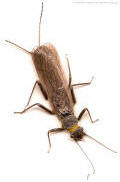

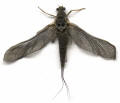
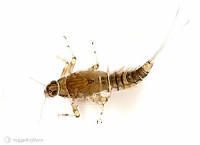
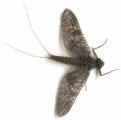
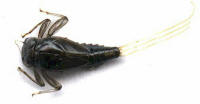
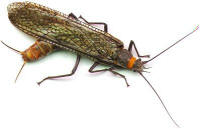

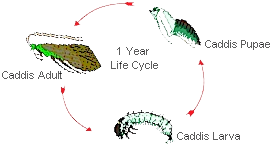 as well as the Upper headwaters
of the river produce far greater populations then
the Lower Yakima River Canyon. As we prepare to honor the mother's of America, hordes of Caddis
will intensify across the Yakima. By
as well as the Upper headwaters
of the river produce far greater populations then
the Lower Yakima River Canyon. As we prepare to honor the mother's of America, hordes of Caddis
will intensify across the Yakima. By



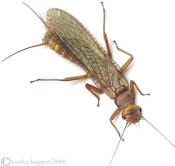
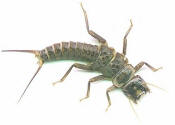
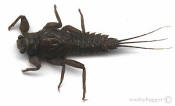


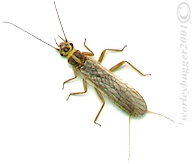


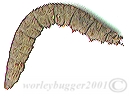 The
Cranefly begins its yearly egg laying rituals in
the slow currents and pools of the Yakima River.
The attention is in the details and most fly
fishermen I speak with even those that have
fished the river for years, overlook this
important food source, not paying enough
importance to this insect. Cranefly populations
are found throughout the river, however specific
areas like the farmlands and Upper Yakima River
are far better places to find these insects in
abundance then in the basalt bottom of the
Lower Yakima River Canyon.
The reason being, habitat.
The
Cranefly begins its yearly egg laying rituals in
the slow currents and pools of the Yakima River.
The attention is in the details and most fly
fishermen I speak with even those that have
fished the river for years, overlook this
important food source, not paying enough
importance to this insect. Cranefly populations
are found throughout the river, however specific
areas like the farmlands and Upper Yakima River
are far better places to find these insects in
abundance then in the basalt bottom of the
Lower Yakima River Canyon.
The reason being, habitat. 